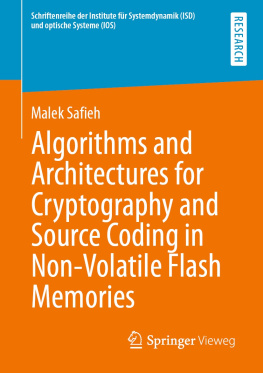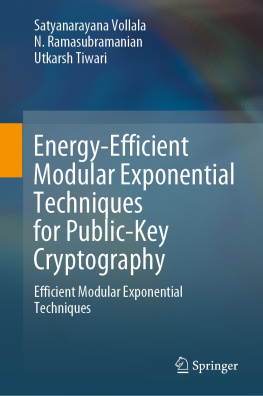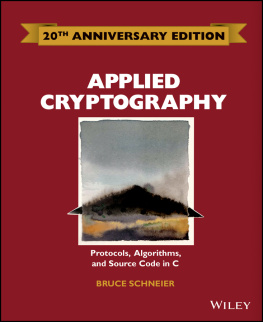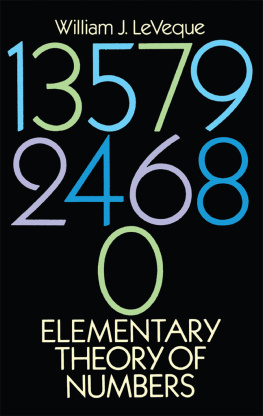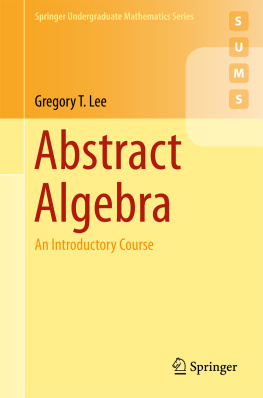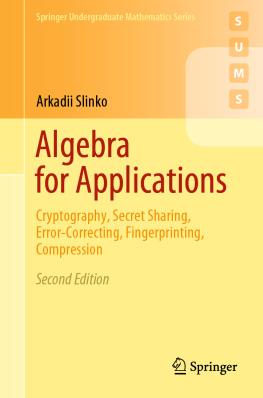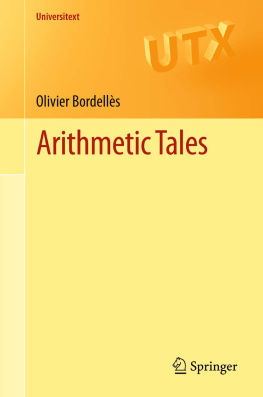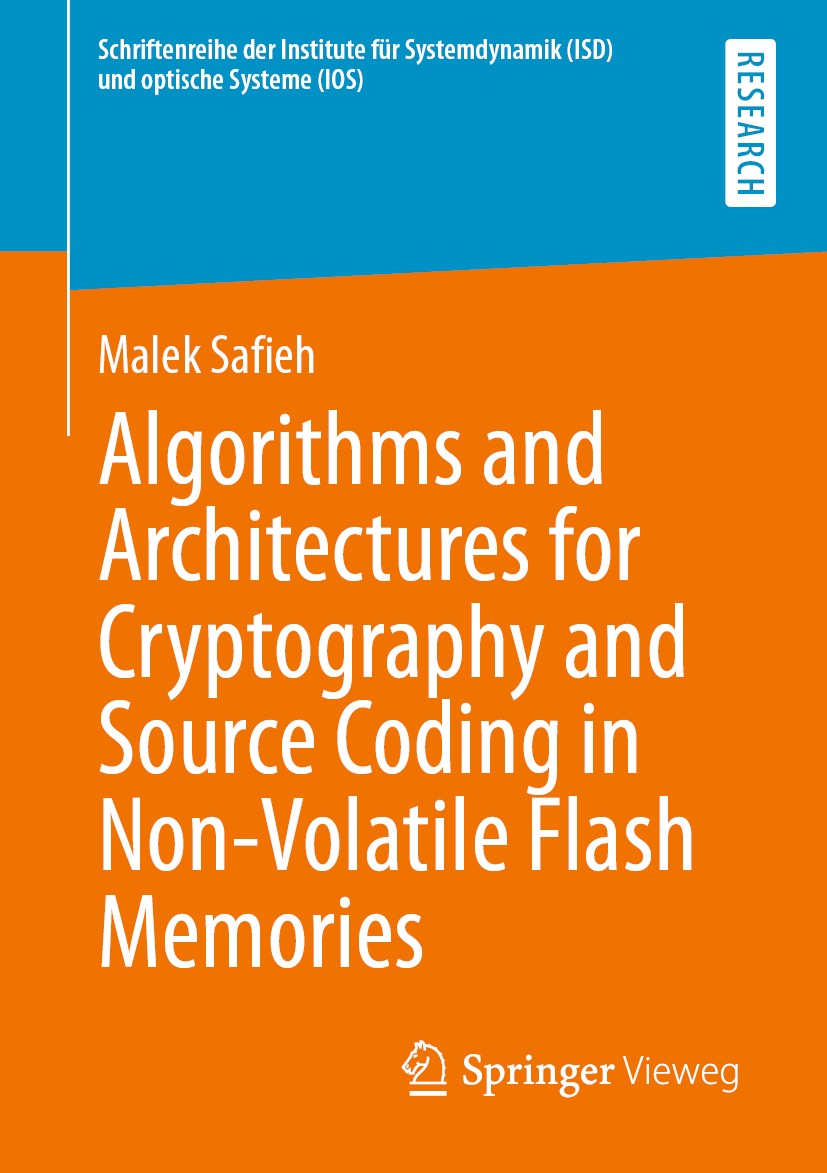Schriftenreihe der Institute fr Systemdynamik (ISD) und optische Systeme (IOS)
Editors-in-Chief
Jrgen Freudenberger
Institut fr Systemdynamik, Hochschule Konstanz (HTWG), Konstanz, Baden-Wrttemberg, Deutschland
Johannes Reuter
Institut fr Systemdynamik, Hochschule Konstanz (HTWG), Konstanz, Baden-Wrttemberg, Deutschland
Matthias Franz
Institut fr Optische Systeme, Hochschule Konstanz (HTWG), Konstanz, Baden-Wrttemberg, Deutschland
Georg Umlauf
Institut fr Optische Systeme, Hochschule Konstanz (HTWG), Konstanz, Baden-Wrttemberg, Deutschland
Die Schriftenreihe der Institute fr Systemdynamik (ISD) und optische Systeme (IOS) deckt ein breites Themenspektrum ab: von angewandter Informatik bis zu Ingenieurswissenschaften. Die Institute fr Systemdynamik und optische Systeme bilden gemeinsam einen Forschungsschwerpunkt der Hochschule Konstanz. Die Forschungsprogramme der beiden Institute umfassen informations- und regelungstechnische Fragestellungen sowie kognitive und bildgebende Systeme. Das Bindeglied ist dabei der Systemgedanke mit systemtechnischer Herangehensweise und damit verbunden die Suche nach Methoden zur Lsung interdisziplinrer, komplexer Probleme. In der Schriftenreihe werden Forschungsergebnisse in Form von Dissertationen verffentlicht.
The Series of the institutes of System Dynamics (ISD) and Optical Systems (IOS) covers a broad range of topics: from applied computer science to engineering. The institutes of System Dynamics and Optical Systems form a research focus of the HTWG Konstanz. The research programs of both institutes cover problems in information technology and control engineering as well as cognitive and imaging systems. The connective link is the system concept and the systems engineering approach, i.e. the search for methods and solutions of interdisciplinary, complex problems. The series publishes research results in the form of dissertations.
Weitere Bnde in der Reihe http://www.springer.com/series/16265
Malek Safieh
Algorithms and Architectures for Cryptography and Source Coding in Non-Volatile Flash Memories
1st ed. 2021

Logo of the publisher
Malek Safieh
University of Ulm, Munich, Germany
Dissertation, Ulm University, 2021
ISSN 2661-8087 e-ISSN 2661-8095
Schriftenreihe der Institute fr Systemdynamik (ISD) und optische Systeme (IOS)
ISBN 978-3-658-34458-0 e-ISBN 978-3-658-34459-7
https://doi.org/10.1007/978-3-658-34459-7
The Editor(s) (if applicable) and The Author(s), under exclusive license to Springer Fachmedien Wiesbaden GmbH, part of Springer Nature 2021
This work is subject to copyright. All rights are solely and exclusively licensed by the Publisher, whether the whole or part of the material is concerned, specifically the rights of translation, reprinting, reuse of illustrations, recitation, broadcasting, reproduction on microfilms or in any other physical way, and transmission or information storage and retrieval, electronic adaptation, computer software, or by similar or dissimilar methodology now known or hereafter developed.
The use of general descriptive names, registered names, trademarks, service marks, etc. in this publication does not imply, even in the absence of a specific statement, that such names are exempt from the relevant protective laws and regulations and therefore free for general use.
The publisher, the authors and the editors are safe to assume that the advice and information in this book are believed to be true and accurate at the date of publication. Neither the publisher nor the authors or the editors give a warranty, expressed or implied, with respect to the material contained herein or for any errors or omissions that may have been made. The publisher remains neutral with regard to jurisdictional claims in published maps and institutional affiliations.
Responsible Editor: Stefanie Eggert
This Springer Vieweg imprint is published by the registered company Springer Fachmedien Wiesbaden GmbH part of Springer Nature.
The registered company address is: Abraham-Lincoln-Str. 46, 65189 Wiesbaden, Germany
Acknowledgements
First and foremost, I would like to thank my doctoral supervisor Prof. Dr. Jrgen Freudenberger for giving me the opportunity to join the research group at the Institute of System Dynamics (ISD) at the University of Applied Sciences (HTWG) Konstanz, Germany. Due to his efforts, it became possible for me to work on my Ph.D. for the last three and a half years. I appreciate the valuableness, the time, and efforts he offered for the long and fruitful discussions we had. I am very grateful for his advices and supports that contributed to the improvement of my research skills.
I would also like to thank Prof. Dr. Martin Bossert for reading my thesis and being my second supervisor. I am very thankful to all the research members at the ISD. It would be truly unfair to mention only a few people since everyone made my time there a pleasure. The conversations during the coffee breaks in the kitchen, after eating in the canteen, as well as during the after-work beer were always fun, kept me motivated and with a fresh mindset.
I would like to express my gratitude to my family and friends for all their help and contribution during my study and the research period. Further thanks goes to everyone who supported me during my doctoral research.
Abstract
Flash memory is an important non-volatile storage medium. Reliable and secure data storage in flash memories requires sophisticated coding and signal processing techniques. Although error-correcting codes are applied in practically all flash storage systems, coding techniques for cryptography and data compression are less developed.
Due to the limited computational performance of the flash controller, many flash storage systems rely on symmetric cryptography for the message authentication. Asymmetric cryptography like elliptic curve cryptographic (ECC) systems offer additional functionality such as digital signatures and key exchange methods, which allows a verification of the integrity and authenticity. In this work, we demonstrate that ECC systems over Gaussian integers are very efficient. Gaussian integers are a subset of complex numbers with integers as real and imaginary parts. Since many Gaussian integer fields are isomorphic to prime fields, this arithmetic is suitable for ECC systems. Implementations of cryptographic algorithms are prone to side channel attacks. We show that using Gaussian integers can reduce the complexity and memory requirements for hardware implementations which are protected against such attacks.
However, determining the modulo reduction over Gaussian integers is extremely expensive. To reduce the complexity, we derive a Montgomery modular arithmetic over Gaussian integers. Moreover, we develop a hardware architecture optimized for the ECC operations targeting low area. The proposed ECC processor for Gaussian integers is a competitive solution for applications in flash memories and other resource-constrained embedded systems.
Data compression provides several advantages for flash memory controllers, e.g. improving the lifetime and storage capacity. In this work, we focus on the dictionary-based Lempel-Ziv-Welch (LZW) algorithm. A fast and compact implementation of this universal data compression procedure is a challenging task due to the recursive structure of the LZW dictionary. To speed up the encoding, we present an architecture that applies multiple dictionaries in parallel. Two dictionary partitioning techniques are introduced that improve the compression rate and reduce the memory size of this parallel dictionary LZW algorithm.

